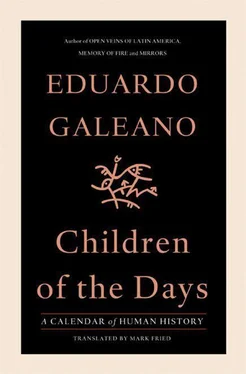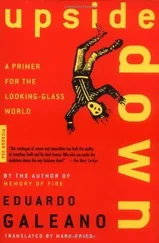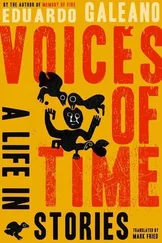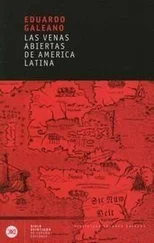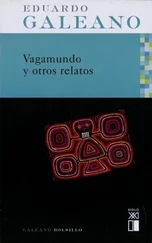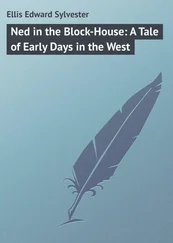In the name of the people’s rebellion, José Artigas expropriated “the lands of the bad Europeans and the worse Creole Americans,” and ordered the land shared out among all.
It was the first land reform in America, half a century before Lincoln’s Homestead Act and a century before Emiliano Zapata broke up Mexico’s haciendas.
“A criminal act,” the offended parties cried. Then to add insult to injury, Artigas informed them, “The least fortunate shall benefit most.”
Five years later, a defeated Artigas marched into exile and in exile he died.
The lands were taken back from the least fortunate, but inexplicably the voices of the vanquished still say, “Nobody is better than anybody else.”
September 11. A DAY AGAINST TERRORISM
Wanted: for kidnapping countries.
Wanted: for strangling wages and slashing jobs.
Wanted: for raping the land, poisoning the water and stealing the air.
Wanted: for trafficking in fear.
September 12. LIVING WORDS
On this day in 1921 Amilcar Cabral was born in the Portuguese colony of Guinea-Bissau, in West Africa.
He led the war of independence for both Guinea-Bissau and Cape Verde.
His words:
“Watch out for militarism. We are armed militants, not the military. None of this is incompatible with the joy of living.”
“Ideas don’t live in the head alone. They live also in the soul and the heart and the stomach and everywhere else.”
“Learn from life, learn from our people. Hide nothing from our people. Tell no lies, expose them. Mask no difficulties, mistakes, failures. Claim no easy victories.”
In 1973 Amilcar Cabral was assassinated.
He wasn’t around to celebrate the independence of the countries he had worked so hard to bring about.
September 13. THE ARMCHAIR TRAVELER
If I remember correctly, Sandokan, prince and pirate, the Tiger of Malaysia, was born in 1883.
Sandokan, like the other characters that kept me company as a child, materialized from the hand of Emilio Salgari.
Salgari was born in Verona and never sailed farther than the Italian coast. He never visited the Gulf of Maracaibo or the Yucatán jungle or the slave ports of the Ivory Coast. He never met the pearl fishermen of the Philippines or the sultans of the Orient or the pirates of the high seas or the giraffes of Africa or the buffaloes of the Wild West.
But thanks to him I was there, I met them.
When my mother wouldn’t let me cross the street, Salgari’s novels carried me across the seven seas and several seas more.
Salgari introduced me to Sandokan and to Lady Marianna, his impossible love, to Yanez the sailor, to the Black Corsair and to Honorata, daughter of the Corsair’s enemy, and to so many other friends he invented so they would save him from hunger and keep him company in his solitude.
September 14. INDEPENDENCE AS PROPHYLACTIC
On this evening in 1821, a handful of gentlemen drew up the Declaration of Independence of Central America, which they solemnly signed the following morning.
The Declaration states, or more accurately confesses, that they had to declare independence without delay, “to prevent the terrible consequences that would result should the people declare it themselves.”
September 15. ADOPT A BANKER!
In the year 2008, the New York Stock Exchange tanked.
Hysterical days, historical days: the bankers, those cleverest of bank robbers, had sucked their businesses dry, though none of them was ever caught on security camera and no alarm was ever tripped. By then a widespread crash was unavoidable. The collapse ricocheted around the world; even the moon was afraid of being laid off and having to relocate to another sky.
The magicians of Wall Street, experts at selling castles in the air, stole millions of homes and jobs, but only one of them went to prison. And when they hollered at the top of their lungs for help, for the love of God, their zeal was honored with the largest reward ever paid in human history.
That mountain of money would have fed all the hungry people in the world, dessert included, from here to eternity. The idea did not occur to anyone.
September 16. COSTUME BALL
At two in the morning on this day in 1810, Miguel Hidalgo shouted the cry that opened the way to Mexico’s independence.
When that famous alarum was about to turn one hundred in 1910, the dictator Porfirio Díaz held the festivities a day early to coincide with his birthday, and he celebrated the centenary in a big way.
Mexico City, painted and polished, received distinguished invitees from thirty countries: top hats, feathered caps, fans, gloves, gold, silk, speeches. The Ladies Committee hid the beggars and shod the street kids. Indians were trousered gratis, while anyone wearing traditional homespun cotton was banned. Don Porfirio laid the cornerstone of Lecumberri Prison and solemnly inaugurated the Central Insane Asylum, with capacity for a thousand patients.
A stirring parade presented the nation’s history. Hernán Cortés, the first of the many volunteers who came to improve the race, was played by a student from the dental school, and a glum-looking Indian marched in an Emperor Moctezuma costume. The crowd cheered loudest for the float that featured a French court in the style of Louis XVI.
September 17. MEXICO’S WOMEN LIBERATORS
The centenary celebrations were over and all that glowing garbage was swept away.
And the revolution began.
History remembers the revolutionary leaders Zapata, Villa and other he-men. The women, who lived in silence, went on to oblivion.
A few women warriors refused to be erased:
Juana Ramona, “la Tigresa,” who took several cities by assault;
Carmen Vélez, “la Generala,” who commanded three hundred men;
Ángela Jiménez, master dynamiter, who called herself Angel Jiménez;
Encarnación Mares, who cut her braids and reached the rank of second lieutenant hiding under the brim of her big sombrero, “so they won’t see my woman’s eyes”;
Amelia Robles, who had to become Amelio and who reached the rank of colonel;
Petra Ruiz, who became Pedro and did more shooting than anyone else to force open the gates of Mexico City;
Rosa Bobadilla, a woman who refused to be a man and in her own name fought more than a hundred battles;
and María Quinteras, who made a pact with the Devil and lost not a single battle. Men obeyed her orders. Among them, her husband.
September 18. THE FIRST FEMALE DOCTOR
This day in 1915 marked the end of Susan La Flesche Picotte’s life.
At the age of twenty-five, Susan had become the first indigenous woman to graduate from medical school in the United States. Up to then, there had been no doctor at all on the reservation where the Omaha Indians eked out their lives.
Susan was the first and the only, the doctor for every person and every purpose, day and night, steadfast and alone in sun and snow. She combined medicine learned with knowledge inherited, college cures with granny’s remedies, so that the lives of the Omahas would hurt less and last longer.
September 19. THE FIRST FEMALE ADMIRAL
The battle of Salamis ended five centuries before Christ.
Artemisia, the first female admiral in history, warned Persia’s King Xerxes that the Strait of Salamis was the wrong place for the heavy Persian ships to battle the agile Greek triremes.
Xerxes paid no heed.
In the midst of the battle, when his fleet was getting roundly thrashed, he had no choice but to put Artemisia in command and thus save at least a few ships and some honor.
Читать дальше
